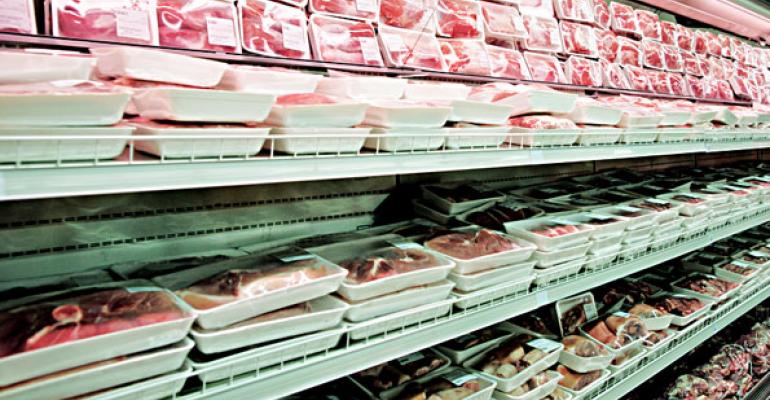ORLANDO, Fla. — Rising prices are on consumers’ minds when they shop supermarket meat departments, and many shoppers are still primarily focused on finding the best deals when they shop. However, value-based shopping behavior is shifting into new territory, and there are signs that convenience items and value-added products may be gaining new traction, according to the seventh annual Power of Meat study, presented here last week at the 2012 Annual Meat Conference, a joint production of the American Meat Institute and the Food Marketing Institute.
“It’s all about price. We’ve got some incredibly savvy consumers out there, and they’re really cautious about what they are doing with their dollar today,” noted presenter Michael Uetz, principal of Chicago-based Midan Marketing. Uetz added that the recession had made shoppers much more focused with regard to their household food budgets, and they are now able to ramp up or wind down cost-saving measures quickly.
The most common practices that respondents cited as ways to save in the meat department included searching grocery circulars for deals, switching to less expensive cuts, looking more closely at price per pound, stocking up on meat when it is on sale, purchasing more private-label meats and cooking different types of meals to stretch meat quantity.
“If you ever had any questions about whether a circular was worth the effort, now it’s worth the effort,” Uetz said. “This pre-planning process that they’re going through … they’re seeing what’s on special, they’re seeing what they can actually fit into their budget, they’re looking for ideas.”
Buying in bulk was one cost-saving measure that appears to be losing traction. In the 2011 Power of Meat study, about 45% of shoppers said that they bought in bulk to save money, down from more than 60% in 2010. Similarly, the popularity of buying and freezing meat in large quantities was down 8 percentage points, and the number of respondents stocking up on sale items fell 5 percentage points. In the 2012 study, shoppers expressed even less interest in these measures.
Instead, shoppers seem more interested in other measures to save. Notably, sales of private label meats were up 14 percentage points, although the study notes that this is not necessarily the result of consumer preference. It may be that shoppers have simply become more willing to switch to PL brands based on price.
“It doesn’t matter to a lot of shoppers what brand it is anymore,” Uetz said. “Brand loyalty is diminishing to some degree. They’re looking for the best price and best value.”
Fortunately for retailers, many shoppers continue to value convenience when preparing meals at home.
“When we asked shoppers where they actually spent time having dinner, five out of seven nights … they’re still cooking at home,” Uetz said.
Retailers that offer their shoppers ideas and convenient solutions continue to have opportunities in this environment, he added.
“Pre-recession, shoppers got really excited about travel, about going out to eat, about trying different flavors … it was the rage. Particularly among young shoppers,” Uetz said.
Now, tighter budgets are forcing many of these shoppers to eat more at home, but their desire to try new foods and flavors may not have diminished. Uetz pointed to refrigerated marinades or store-made marinades as a simple solution. In 2010, 75% of respondents to the Power of Meat study said that they had marinated meat or poultry prior to cooking. That rose to 85% in the latest study.
Only 6% of these shoppers said that they had bought pre-marinated items from store, but the trend still presents a good opportunity for cross-merchandising marinades and encouraging shoppers to try new cuts or new flavors.
Portion Size Gains Importance for Meat
ORLANDO, Fla. — Whether they are empty nesters, single parents, couples without children or young people just getting started on their own, one- and two-person households now account for 60% of all U.S. households, Sherry Frey, vice president of account services for Nielsen Perishables Group, said during her “Decision Tree: Understanding Consumer Choices” presentation here last week at the 2012 Annual Meat Conference, a joint production of the American Meat Institute and the Food Marketing Institute.
Many meat departments still need to adjust to this new reality by offering more portion sizes that respond to the needs of these smaller households.
Consumer packaged goods companies have responded by creating smaller package sizes tailored to smaller households, but “we don’t have those products in the [meat] case right now. That’s something they would go to the service counter for,” Frey said.
These thoughts were echoed in a later presentation by Trevor Amen, manager of channel marketing for the National Cattlemen’s Beef Association. Research indicates that shoppers in smaller households are often willing to pay a higher price per pound for smaller, lean premium cuts, such as those designed by NCBA’s Beef Alternative Merchandising program.





